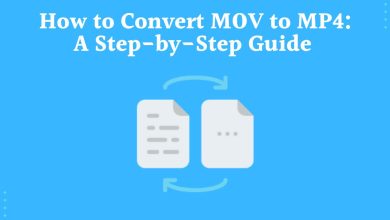
Search engine marketing professionals who work with web developers understand how difficult it is to communicate the importance of SEO requirements.
That visually stunning website masterpiece may turn out to be a visually stunning page load nightmare.
SEO professionals who consider web design to be a part of their role are valuable. They understand how certain web design practices can degrade the user experience.
When the user experience is subpar, the page will not perform well in search engine results. In today’s digital world, meeting search engine criteria is never a one-time event.
Google is not the only search engine available. People are increasingly turning to new search engines that reduce clutter, hide ads, and protect their privacy.
Being competitive is a never-ending process. An SEO expert is always on the lookout for ways to improve his or her ranking.
The best SEO experts are constantly monitoring web design practices because changes can be costly or harm the user experience.
Searchers’ attention spans have shrunk. When we browse the web, we expect answers to our queries to be as precise as possible in meeting our search criteria.
It’s not easy being an SEO professional who is paid to outsmart, outrank, and outmaneuver a global army of computerized bots, but competition is in every SEO professional’s DNA.
Web designs are frequently incompatible with marketing requirements. They complicate matters. What is the source of your greatest annoyance?
- UX that is not intended to convert.
- By ignoring accessibility, we are limiting human experience design.
- Not designing with a specific market in mind.
SEO Twenty Years Ago
SEO experts realized twenty years ago that web design practices have an impact on search engine marketing strategies.
Someone new to search engine optimization begins by learning the fundamentals of how search engines rank web pages and deliver search query results.
While the underlying foundation of SEO hasn’t changed much in the last two decades, the technical aspects have.
Websites can be massive digital properties containing thousands of pages.
Try free Plagiarism Checker, Paraphrasing Tool, and Website Reviewer.
There was a time when a website’s homepage included links to every internal page. This made finding content nearly impossible. Back then, the belief was that if visitors couldn’t see it, it didn’t exist at all.
That included search engines because there was a long list of them to submit to and optimize for back then.
Although the glory days of automatic submissions and alphabetical directory sorting have passed, the problem of finding information on websites has not.
This is why advanced SEO specialists research information architecture. There are two reasons for this:
- User frustration is caused by poorly designed navigation.
- In order to follow, search engine bots require a well-planned information architecture.
UX Design For Conversions
The digital user experience should be considered when planning SEO.
Clients are dissatisfied when problems arise as a result of a lack of understanding of why usability and conversions design is important. Website owners want their sites to be the first to load and to provide the best user experience possible.
Large corporations hire senior-level search engine marketers who have technical SEO experience as well as an understanding of the value of user experience and SEO.
Small and medium-sized businesses may be unaware of how competitive search engines are and how web design affects online marketing.
Their chances of competing are hampered by budget constraints. Less experienced website owners quickly become frustrated because they are unaware of all the puzzle pieces.
One of the most important lessons we’ve learned over the last two decades is that building a successful website requires a skilled team. They must collaborate with the user interface design agencies for:
Usability and holistic SEO
There were two opposing camps in the past.
You were either a web designer with a graphic design background looking to create visually appealing, creative webpages, or a search engine marketer concerned with optimizing webpages to rank well in search engines.
Usability and a focus on user experience were the missing pieces for both.
In 2002, I began writing about and focusing on what I called Holistic UX and SEO in an attempt to bridge the gap so that our efforts did not conflict.
Furthermore, a few marketers connected the dots between usability and SEO, writing books that are still considered authoritative resources.
Read Is Your IP Address A Google Ranking Factor?
Bryan and Jeffrey Eisenberg began writing about web conversions in 2005 with “Call to Action.”
Over the next dozen years, they presented data and studies demonstrating the benefits of persuasive architecture and web design in assisting users in completing tasks.
With his books “Landing Page Optimization: The Definitive Guide to Testing and Tuning for Conversions” (now in its second edition) and the new “Unleashing The Primal Brain: The Essential Field Guide For Modern Marketers,” Tim Ash tackled landing pages and became a leading instructor for marketers.
Shari Thurow is a well-known educator and speaker who has written several books, including “When Search Meets Web Usability.”
Because they could test and track the results, SEO professionals eventually discovered the benefits of taking a holistic approach to website design and marketing.
Today, I refer to our collaborative approach as the human experience requirement for digital marketing and web design.
How Does Holistic SEO & UX Aid in Website Marketing?
By definition, the holistic approach focuses on the cause rather than the symptoms.
Rather than focusing on a single aspect of website management and promotion, the entire process is considered. This process evolves and changes regularly, which is why SEO skill level is critical.
It takes years to figure out what causes a drop in rank, a drop in traffic, an increase in bounce rates, poor-performing pages, and webpage abandonment.
When you examine your data, you may notice trends that have no story behind them.
- Why is there such a high bounce rate?
- Why does one page outperform another?
- What is the cause of the increase in referral traffic?
- Is it possible to replicate it?
- Who visits the website?
- What ranking factors resulted in improved search results?
- What type of computer did they use?
Other Research Considerations to Look into
- Is there anything in your data that contradicts your assumptions about the demographics of your website visitors?
- If you pay attention, you will notice that the stories behind the data not only change over time, but also indicate where, when, and how to adjust the web design itself.
- What happened after people arrived at the website? Why?
- What happened if your team created a PPC campaign and the results were unsatisfactory?
Connecting The Dots For Increased Conversions
Nothing stays the same in the world of search engines.
Human-computer behavior changes with each update in search engine technology and updates to computer devices that allow people to access the internet.
There are fascinating stories based on their research if you want to delve deeper into neurosciences and human-computer interaction.
For example, we follow the gaze of a face in an image, so the call to action button is placed here.
We all react differently to colors, and if you’re colorblind, you might not see them the way a designer does.
According to human-computer behavioral studies, a landing page has five seconds to persuade users to stay. Nonetheless, most website designs do everything in their power to force us to leave as soon as we arrive.
Numerous subtle changes can be made to web pages to increase conversions. Experienced SEO professionals are frustrated by this.
The more advanced the marketer, the more they demand user interfaces that improve the user experience and allow them to complete desired tasks.
Marketers are compensated for assisting in the success of websites. They cannot address this with a website that is poorly designed and performs poorly.
SEO, Web Accessibility, and User Experience
There is a small but growing community of SEO professionals who have integrated accessibility guidelines into every marketing conversation.
Marketing efforts are more likely to succeed when you know who is searching and buying. When a webpage or web app does not render in mobile devices for people using assistive technology, purchases are blocked.
Because the code used for screen readers also helps search engine bots, advanced-level SEO professionals incorporate basic WCAG2.1 accessibility guidelines.
The need to constantly refine and test SEO practices grows with each change to search engine algorithms and the display of search engine results, both visually and voice-activated.
On the internet, competition for rank, traffic, and brand is fierce.
Marketers can plan by reading Bill Slawski’s alerts on Google’s search engine patents.
Aware of website ADA accessibility lawsuits, astute marketers want accessibility site audits performed because they understand the risks of a website or brand becoming embroiled in a legal battle.
When a website is not ready for promotion strategies, top online marketing agencies can tell. They have an in-house usability specialist or outsource website usability and conversions audits. Accessibility audits are performed by leading digital marketing firms.
These audit recommendations are intended to introduce new opportunities for increased conversions and revenue.
What web design practices are incompatible with online marketing strategies?
Certain web design decisions obstruct indexing, usability, readability, accessibility, and findability.
This complicates SEO professionals’ jobs, especially when you see the same patterns and design conflicts repeated by your clients.
The most common web design frustration pain points almost always point to a lack of understanding of how specific target visitors or customers use the web.
The following are examples of pain points.
Navigation
- Hamburger navigation menus are not user-friendly.
- Dropdown navigation elements that do not link to the main category and instead force you to select a sub-category.
- Navigate using an accordion.
- Massive menus.
- Use search instead of filters to create categories.
- Navigation for manual TAB keyboard users has not been tested.
Design
- The top of the page features oversized images.
- Scrolling is infinite.
- Font-awesome is being used instead of SVG fonts.
- The alt text descriptions for images are not included.
- URLs with Session IDs (dynamic single-use URLs).
- When decisions about site redesign are made without consulting analytics. Poor decisions made on the basis of opinions or feelings rather than data.
- Sliders that cause the page to load slowly because all of the images in the slider must be loaded first.
- The filename, title, and alt-text of the image in the slider will not be displayed.
- Failure to create a strong page title heading with an H1.
- Not testing each page in a variety of mobile devices (or emulators for resizing) to see how pages stack and render.
- Today’s native apps, which can be downloaded from Google and Apple, can be used for reputation management research and added to your stories.
Although optimizing native apps differs from optimizing web apps, comments left by people who download mobile apps are important to track.
For a Competitive Advantage, Invest in a Skilled Web Team
Everyone involved with the website is included in the holistic approach. User interest drives information requests.
Skimping on the holistic approach when considering any web design project will not sustain your web project. There are too many variables to consider, such as changing search engine algorithms, ADA compliance updates, improved web page analysis, and expert data interpretation.
Any disagreement or conflict over the development of the website can lead to unwelcome symptoms later on. This is why we begin with requirements gathering.
SEO experts are constantly monitoring marketing data. Web designers like Clay are constantly testing new webpage designs. This is a collaborative effort.
Because the result benefits the website, a team should be united in this manner. Skills are important, but knowing when to use them makes all the difference.
Long-time knowledge SEO professionals always emphasize the holistic approach because experience with searchers provides historical evidence.
“The more (technical) SEO your developer knows, the better. Even if you argue over specifics of implementation based upon cost, reward, scalability (e.g. are people going to bother continuing this process once we’re done) – it’s an argument worth having and the final result is better than it would have been otherwise. If they know nothing, they are arguing from a point of laziness or convenience.”
Stockbridge Truslow
Learn more from SEO and read How To Rank Content And Get Found In SEO For Tourism Brands.





2 Comments